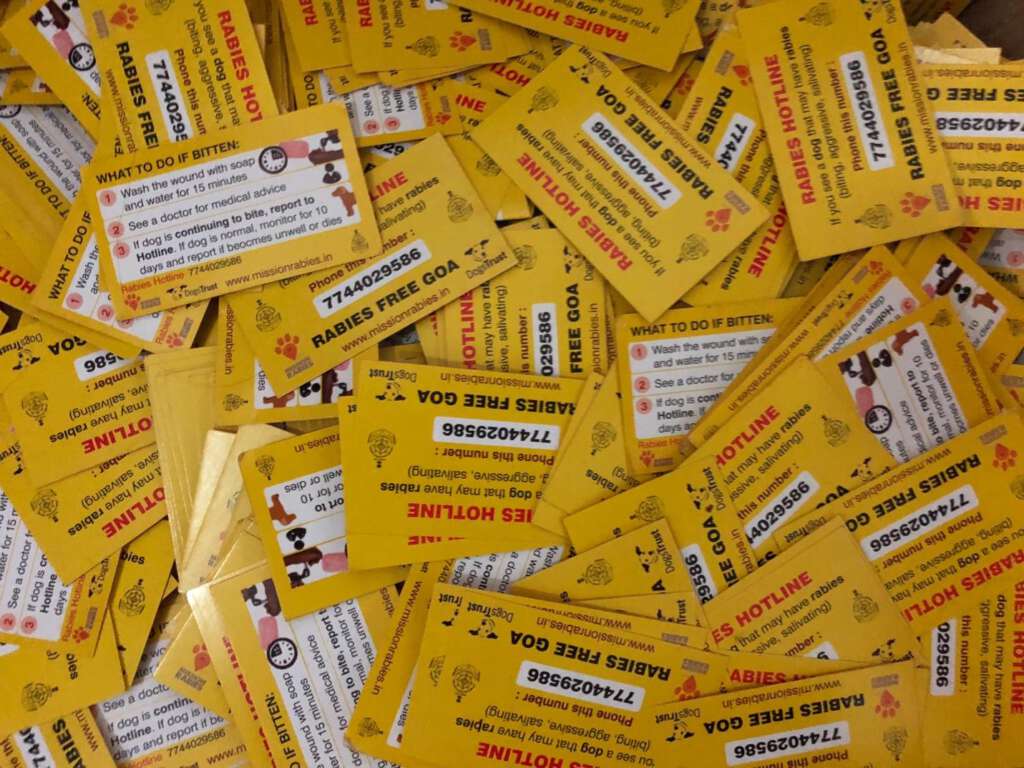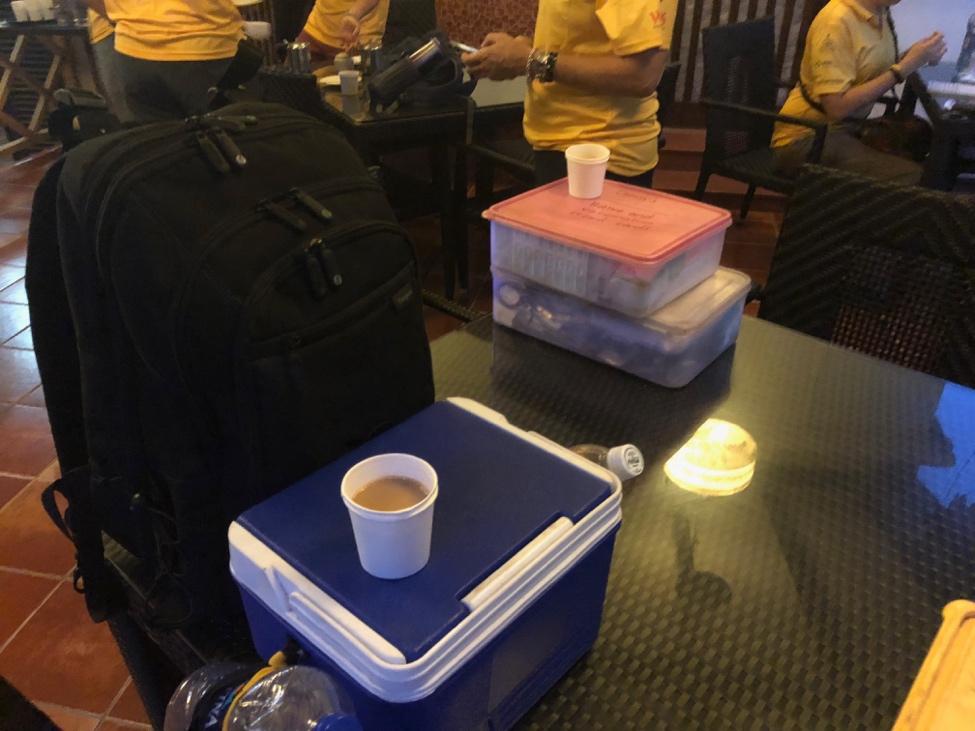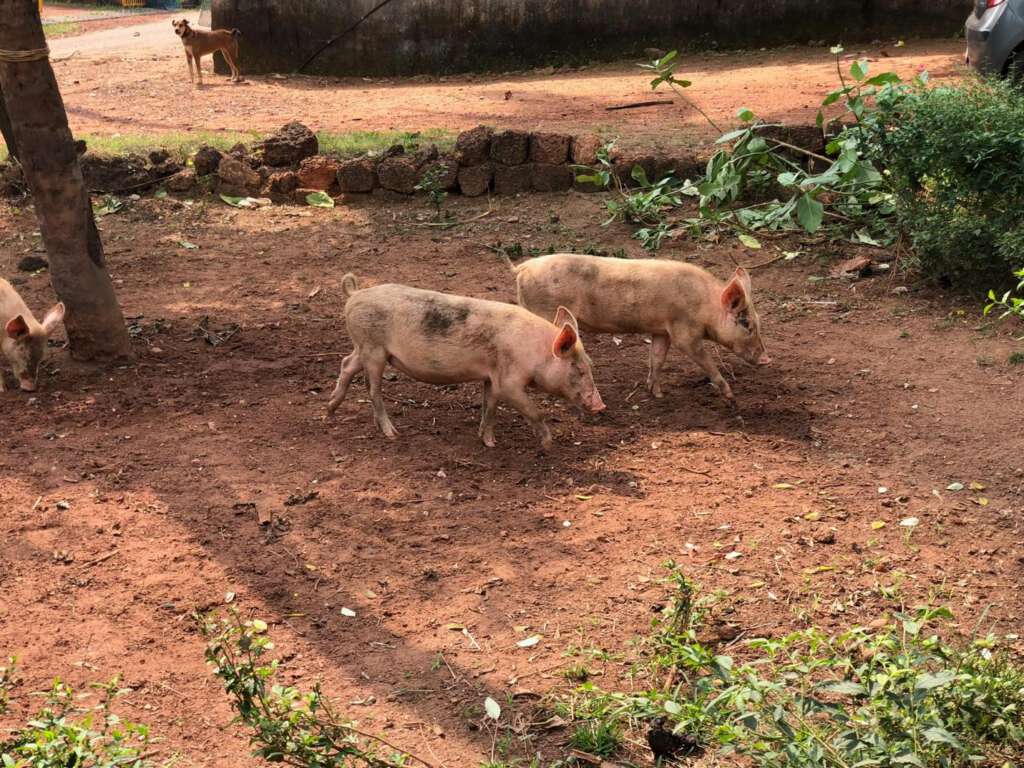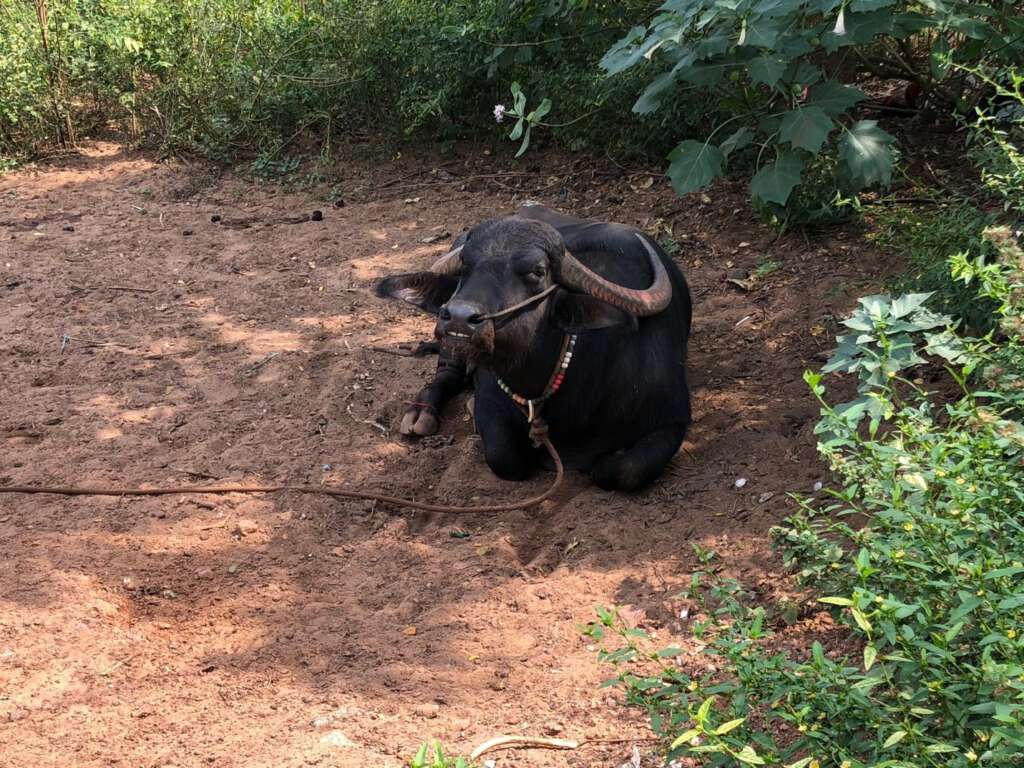
Mission Rabies Goa: Chapter 8 – A Typical Day in the Field
My intention for this trip was to maintain a daily blog, but those plans quickly fell by the wayside. Practically every moment of the day was filled with an awe-inspiring sight or an important task, and by the time the day’s activities came to a close, I was too exhausted to do much of anything, let alone sit for a few hours and re-live the experience through blogging.
So, let me take you through the first day of the mission, which was a fairly typical day. The next few posts will show the highlights of the rest of the first week, the second week, and the fabulous meditation retreat we visited on our weekend break.
I was thrilled to learn that my teammate for the two weeks was going to be Alyssa.
I met Alyssa, Claudia, and Dawn at the very start of the journey, at Newark International Airport, and we immediately bonded with each other.
Alyssa is a practicing veterinarian in Las Vegas, and she also works for Brief Media, writing for the journal Clinician’s Brief. It was in that journal that I spotted the ad for Mission Rabies.
There’s really no explaining rapport or chemistry between people, but I felt a definite nice chemistry between us right away, so I was really happy to be paired up with her.
Our team leader was Frank, a local resident who works with the Mission Rabies Goa project. He and his crew of five animal handlers, plus me and Alyssa, comprised “The Leopards”.
We start the day by meeting in communal room in our villa and preparing our supply boxes.
We loaded our boxes with ice packs,
vaccines,
syringes,
needles,
vaccination cards,
Mission Rabies bracelets (kids love them),
and business cards.
After loading up our gear, we headed out to the main drive where the hotel registration office is located, and we wait for the trucks to roll in.
Frank, our leader, sits up front, usually with two of the handlers, one of whom is the assigned driver for the day. Alyssa and I sit in the back seat, and the rest of the boys ride in the cab of the truck.
Riding in the cab looked like fun, but us volunteers are not permitted to, unfortunately.
Although cows wandering around are a common site in India, for a city boy like me, it never fails to freak me out, no matter how many times I see it.
We passed many stray dogs on the road while driving, an indication of just how large the stray dog population is in Goa, and how big a task we have ahead of us, trying to vaccinate 70% of them.
Frank informs us of the agenda every day. Some days, we’ll be chasing down strays through different neighborhoods, or maybe on the beaches. Other days, we’ll go door to door, visiting homes and asking if there are any dogs on the premises. On the door-to-door days, word gets out pretty quickly, and people in the vicinity will often bring their dogs right over to us, asking if we could vaccinate them.
My personal favorite activity was looking for stray dogs in the different neighborhoods. The main reason people travel to Goa is to visit the beaches. It’s a beach resort town, and the beaches, seaside restaurants, and colorful souvenir shops are the big draw. There’s more to Goa, however, that most visitors never see. The quiet streets, the variety of architectural styles of the houses, the front yards, the back yards, the winding alleys, the beautiful fields, the peaceful farms, the busy school houses, the quaint churches… most people never experience this part of Goa.
I literally walked through miles and miles of the streets and alleys of Goa, and it was amazing. No tourist sees Goa like this, and it was an eye-opening privilege.
Our initial assignment on the first day was to chase down some neighborhood dogs. We weren’t very successful locating many that morning, unfortunately. Our bright yellow Mission Rabies shirts were pretty conspicuous, however, and word got out that we were in the neighborhood, and people asked us if we could vaccinate their dogs.
After a dog is vaccinated, we paint a spot on their forehead, to indicate to any of the other teams that might pass through the same area that the dog has already been vaccinated. In fact, while walking through the streets of Goa, we came up on this dog with the telltale sign that another team had been here not too long ago.
After patrolling some of the streets, we made our way to our next destination: Candolim Beach. Lots of stray dogs live on or near the beach, as you might imagine, with all of the food stalls and friendly people. These dogs mooch snacks all day.
Trudging through the sand on a blazing hot day is pretty physically taxing work, but it’s very exciting. Once you spot a dog, chasing it down on the sand is pretty tricky, but these boys are highly skilled and really know how to wield their nets.
Before long, we were catching quite a few beach dogs.
The handlers are very impressive with their nets. They snag the dog in net and then quickly twist the handle. This subdues the dog and is more secure.
Then, one of the vaccinators (me or Alyssa) runs over and injects the vaccine, and then someone goes over and paints the dog’s head. The handler then untwists the net and lets the dog free.
One of the dogs we were pursuing made a dash toward the ocean, but we cut him off, and we snagged him in the net. As the waves hit the shore, the dog did get a little wet, but the water wasn’t deep enough to pose any danger to the dog. In this video, you can see how the net is twisted to prevent the dog from moving too much. Alyssa runs over and vaccinates the dog. The forehead gets marked with paint, and then the handler untwists the net and the dog run off.
We spent a little more time on the beach with the dogs, and then… breakfast! We start our day super early, around 7:00, when the air is not too hot. We wrangle dogs until about 9:00 or 9:30, and then we take a breakfast break.
Breakfast was, for me, a very interesting part of the day, because it always took place in very authentic, hole-in-the-wall, mom-and-pop style places. These places weren’t big on décor, and few of them even had a printed menu available. Some places had a piece of paper tacked to the wall listing what was available. Of course, it wasn’t in English. I didn’t care at all. These are the kinds of places that tourists probably never enter, and for me, that’s the main appeal of the place.
Samosas are served at nearly every place, as well as these very bready sweet rolls, which I loved. I got to sample samosas from six or seven different cafes, and it was interesting to note the differences. Some were mild, while others were so fiery hot and spicy that I couldn’t eat them.
Chick pea curry was also available in almost every breakfast place. Again, in some places it was fine. In others, it was unbearably spicy.
One of my favorite dishes was wada pav. It’s a deep-fried potato dumpling, placed inside a bread roll. All carbs and fat, I know. Not the healthiest dish. But hey, it was delicious.
After breakfast, we headed back out and chase down some more dogs, until 12:30, and then we went back to the hotel for lunch. Every day, we get a break in the middle of the day for lunch, and to rest up a bit. Lunch time is the hottest time of the day, and relaxing in the air-conditioned hotel room is pretty rejuvenating.
Around 2:00, we all head back down to the communal room in the villa, restock our boxes with more vaccines, syringes and needles, and head back to the reception area where the trucks roll back in, and we go out and do it all over again for the afternoon session.
In the afternoon of that first day, we went door to door, traipsing through some very interesting neighborhoods.
As I mentioned before, I’m a city boy, and seeing farm animals roaming around in people’s yards was really a new experience for me.
One of the best parts of this project is interacting with the local people. Everyone is so friendly and so appreciative of what we’re doing. People make friendly small talk, invite us into their homes, offer us tea or snacks. It’s so nice and welcoming.
Family life is a big part of Indian culture, and that certainly holds true in Goa. Many (I’d say most) of the residences we visit have children on the premises. This definitely was a big thrill for Alyssa. She’s a mom, and being away from her kids for two weeks wasn’t easy for her. Fortunately, she was able to get her “kid fix” multiple times every day. I have no shortage of photos of Alyssa chatting with children, and she gave away dozens of Mission Rabies bracelets to them.
I got in on the act, too, sometimes.
The afternoon session ends around 6:00, and Frank and his team bring Alyssa and I back to the hotel. We discard the used needles and syringes in the grass just outside of our villa… just kidding. We properly discard the used needles and syringes into the appropriate waste containers, put the ice packs back into the freezer to get re-chilled, refill our water bottles, and then head to our rooms to shower before dinner. The evening dinners are so nice. The food is usually pretty good, and we get to eat together with the other volunteers, sharing photos and nice stories about that day’s adventures.
So, there you have it: a typical day for Mission Rabies Goa. I still cannot believe how fortunate I am to be a part of this.
Next Post – Chapter 9
I am delighted to announce that in February 2020, I will once again be joining a team of Mission Rabies volunteers on another vaccination drive. The destination: Ghana! Our intention, as always, is to vaccinate as many dogs as possible, with a goal of immunizing 70% of the dog population. At this level of immunity, the rabies cycle is broken. To do this type of work is expensive and requires many resources. If you support the work that I am doing with this amazing organization, I ask that you make a donation to the cause. Every dollar helps.






